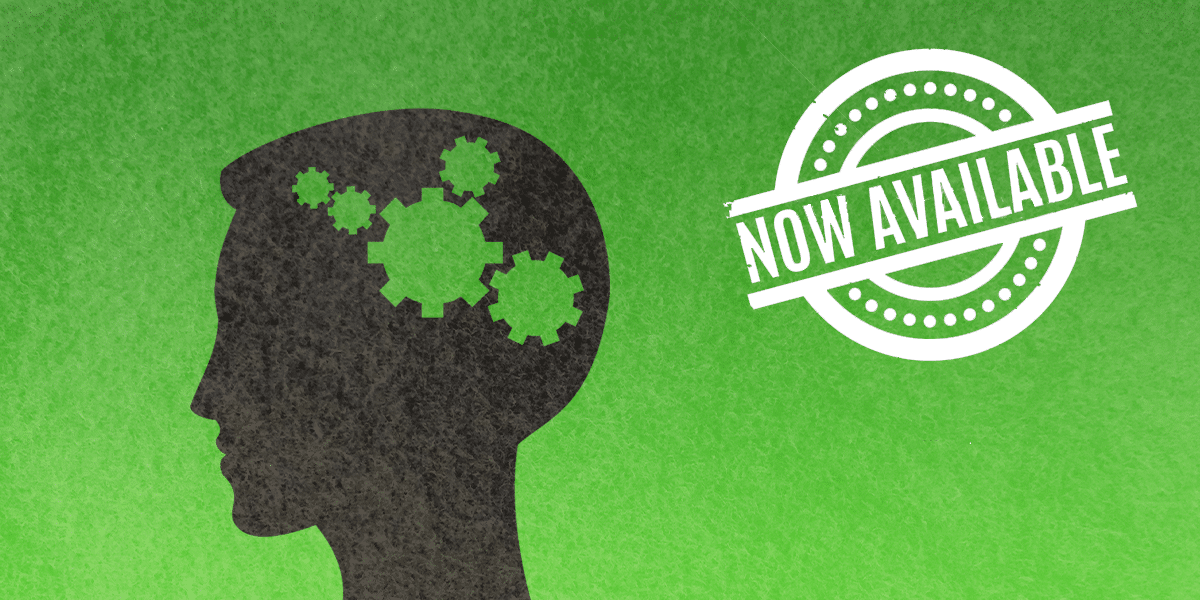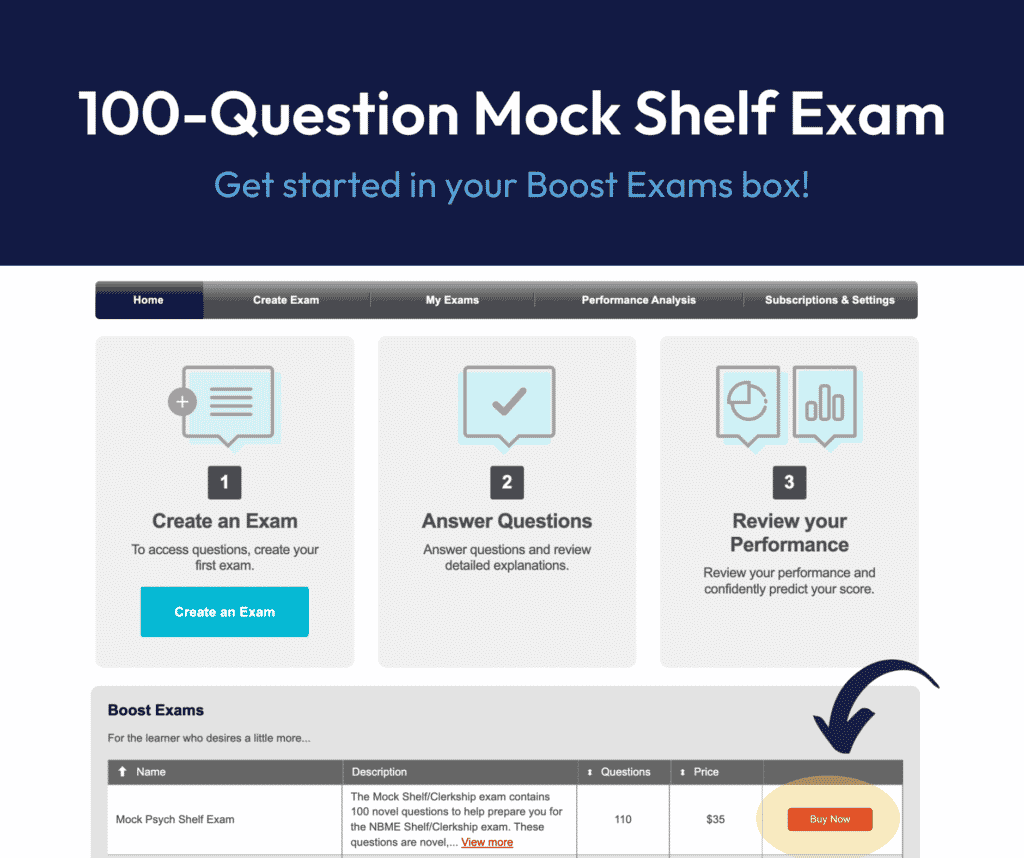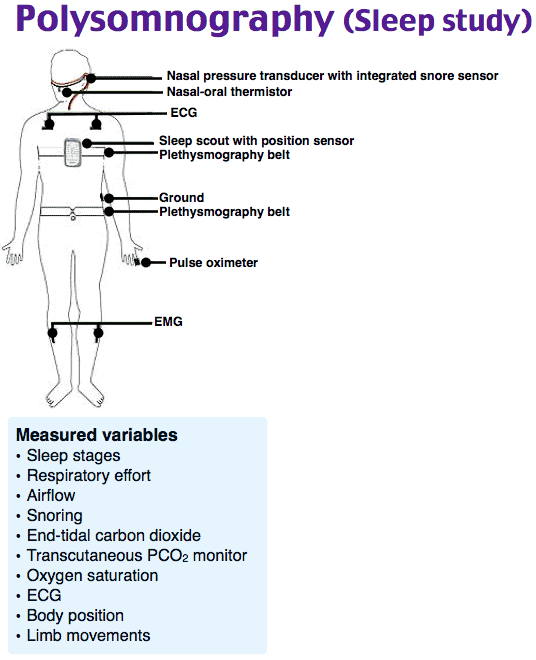Boost Your Confidence with the Mock Psychiatry Shelf Exam

Introducing the Mock Psychiatry Shelf/Clerkship Exam, best suited for medical students who are looking to excel in their psychiatry clerkship.
The Mock Psychiatry Shelf/Clerkship Exam is located in your Boost Box (on the home page of your desktop/laptop Rosh Review account). It contains 100 questions and comprehensive explanations to help you prepare for the NBME Psychiatry Shelf Exam.

Categories covered include topics such as schizophrenia, major depressive disorder, and intellectual disability with a few “zebras” to keep you on your toes.
Here is an example of a question and explanation:
A 56-year-old man presents with daytime sleepiness. His body mass index is 24.5. Of the following, which is required to exclude central sleep apnea as a diagnosis?
A. Cerebrospinal tap for orexin-A level
B. Echocardiography
C. Overnight pulse oximetry
D. Polysomnography
Answer D
Central sleep apnea is defined by an apnea-hypopnea index (in this condition it includes central apneic and hypopneic events overnight per hours slept, normally obtained during polysomnography) of 5 or more that is not explained by another sleep disorder. Polysomnography is required to determine the apnea-hypopnea index. The condition may be idiopathic, in the setting of variable respiratory efforts without upper airway obstruction; associated with Cheyne-stoke breathing, a variation in tidal volume that results in apneas hypopneas and arousals; or associated with opioid use, a finding of an apnea-hypopnea index more than 5 in the setting of decreased respiratory rate.

Cerebrospinal tap for orexin-A level (A) may be used for research purposes to assess the type of narcolepsy diagnosed in a patient. Type 1 narcolepsy is associated with cataplexy and low cerebrospinal orexin-A levels. Type 2 narcolepsy is not associated with cataplexy and is associated with normal cerebrospinal orexin-A levels. The test is not required to diagnose narcolepsy, a condition that is confirmed on history, polysomnography, and multiple sleep latency testing. Echocardiography (B) may be useful in evaluating central sleep apnea, as patients who have congestive heart failure have a propensity for hypoxemia and Cheyne-Stokes breathing, a ventilation variation that causes apnea and hypopnea episodes overnight. However, this is not required for diagnosing the condition. Overnight pulse oximetry (C) may be used to determine overnight oxygen levels in patients who have central sleep apnea or pulmonary conditions such as chronic obstructive pulmonary disease. It is not in itself diagnostic of obstructive or central sleep apnea.
One Step Further question:
How is sleep-related hypoventilation characterized?
Answer:
Polysomnography finding of overnight elevated pCO2 levels that is not due to another condition.
We also have mock shelf exams available for emergency medicine, internal medicine, family medicine, OB/GYN, and pediatrics. And be sure to check out our psychiatry board review question bank for thousands of comprehensive questions.
If you’re interested in the Top 10 Questions About Psychiatry Qbanks, the PRITE, & the ABPN Board Exam, learning what goes into launching our Psychiatry Qbank, and other free content, head over to the Rosh Blog.
Study on,
The Rosh Review Team





Comments (0)